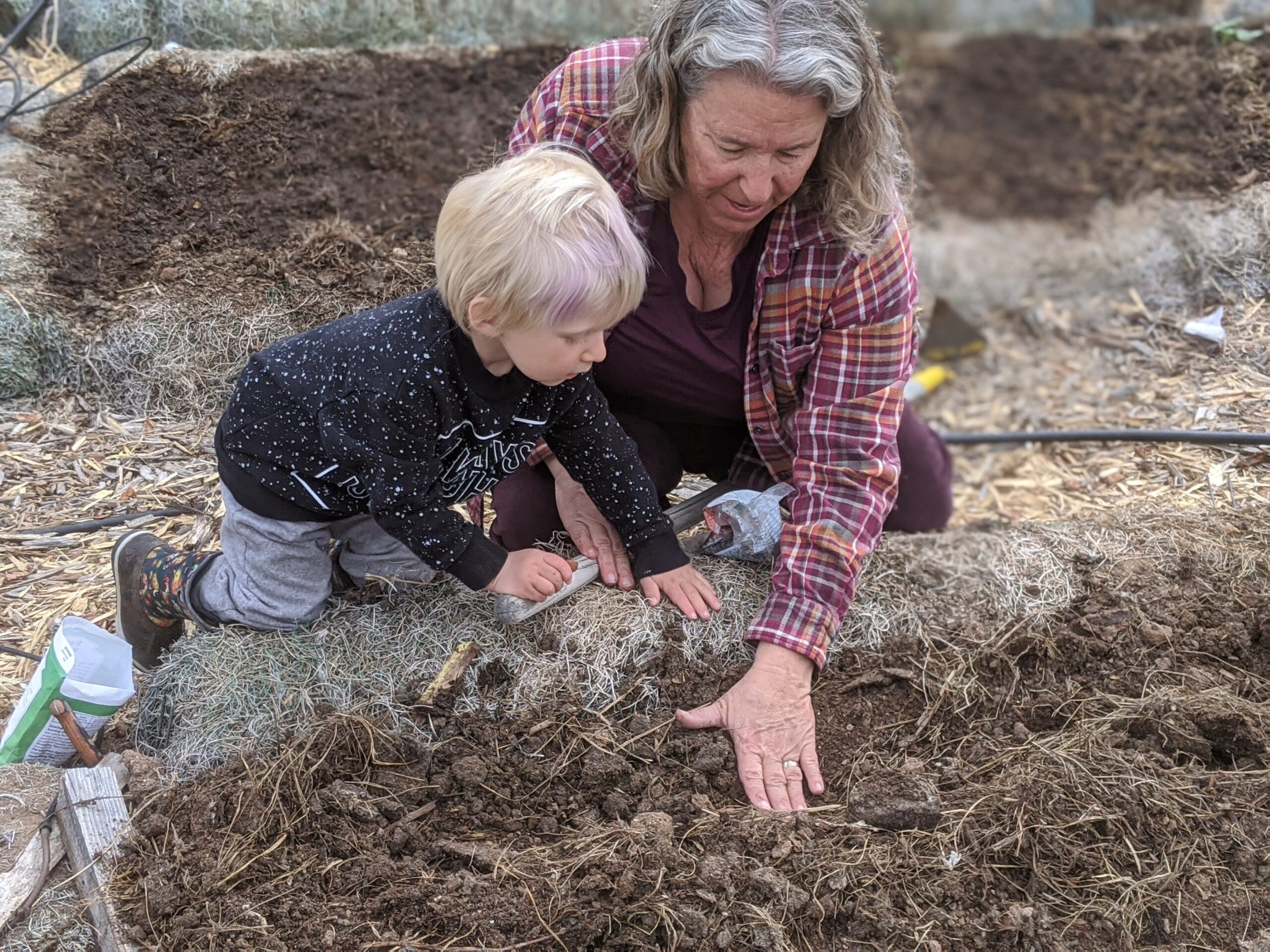KidsGardening recently chatted with JaNay Brown-Wood, an award-winning children’s author, poet, educator, and scholar on Instagram Live. She did a read aloud of her latest book, Miguel’s Community Garden, and shared her insights on how gardening with kids supports their holistic development.

One day at a friend’s house, JaNay found the inspiration for her Where in the Garden book series. In their garden, which was bursting with plants and produce, she observed a young, preschool-aged girl move through the space with delightful ease. She knew the names of many plants and exuded a level of comfort that made quite the impression on JaNay. Ultimately, her friend’s daughter’s relationship with her garden led to JaNay sharing the stories of Miguel’s Community Garden and Amara’s Farm. In these books, the toddlers each venture out on an adventure to explore garden-grown goods in their community.
“One of the things that is of utmost importance to me as an author and as an educator is to really make sure children can find themselves in books. There's just not enough diversity in children's books. And that spans from the books for the very youngest kids to young adults. There needs to be more authentic types of diversity and diversity that doesn't center on, hey, this is a Black child. This is just children living their lives in an authentic way. And I think that is especially what inspired these books. Like Amara, she's just a Black girl who actually lives with her grandparents, they’re her guardians, and she's just moving through their garden and looking for produce. So while she's a diverse character, the focus isn't that she's diverse. It's not that she's Black. She just happens to be a Black American girl on the farm. And that's what I really wanted to come across in these books. Authentic diversity, casual diversity, and children engaging in the outside world, specifically with plants and with gardening.”
JaNay grew up with 13 or 14 (she loses track!) aunts and uncles, so she has always had an uncountable number of cousins and family members to celebrate life with. Through her family, she felt a sense of community and the power that comes from being able to revel in each other’s company.
“We were always having some kind of celebration where we all came together. It was potluck style. Matter of fact, my second book, which is called Grandma's Tiny House, A Counting Story, is inspired by my family coming together for Thanksgiving and bringing lots of different foods because this was my experience; this family that was boisterous and filled with love and in each other's space and making life just beautiful and fun. I think that comes through in lots of my books. And the Where in the Garden series is no exception. We get to see all of the characters that are featured across the series, and kids especially like that – they knew Amara’s Farm, and here she is in Miguel's story.”
With a background in psychology, child development, and education, JaNay is an advocate for all the profound ways in which gardening can positively impact kids.
“In my early childhood education courses, we're always talking about holistic development; making sure the child's physical development is supported, as well as cognitive, social, emotional, and language. So all of these pieces are what really set the stage for holistic development. And I think that gardening allows for all of those domains to be supported physically. A kid getting out in the garden, they're touching, this is sensory. They're smelling. There's some physical work and having to shovel up and make a hole or pull and pick things.”
“And then not to mention, of course, the nutrient element of physical development – eating healthy from the garden; fresh fruits and vegetables that support physical development. But then cognitive development is supported, too. When children get to measure as the plant grows and get some number practice in, they have to think about the progress of germination. There's so many content-rich conversations that a parent or a teacher can have with children that stimulate their cognition and their cognitive development and then the social emotional element.”
“Socially, when you're gardening with others, you have to cooperate with others. You have to take turns. And emotionally – let's be honest – sometimes gardening can be challenging. So there's this practice of the emotional aspect, too. This is all just to say that gardening sets the stage for holistic development and really helps children get outside in nature, come to have this appreciation of nature, and really learn about how food grows and where it comes from.”
Through gardening, kids are able to nourish their minds, bodies, and souls. They can also be inspired to try new things and, in the bigger picture, they are sparked to think about questions like: What are we doing to give back to Earth? What does this mean and how can we be better at conserving?
“Many of [my] books allow me to incorporate my child development and my early childhood education background. It's social emotional learning but they also introduce some strategies to help children navigate some of the sort of tricky social interactions that they may come up against.”

To learn more about JaNay and her upcoming books or watch her cooking videos, visit https://www.janaybrownwood.com/


